Temporary Fence Accessories
Fence Panel Fixing Accessories and Products for Enhancing Temporary Fence Security
Frishine supplies complete fencing accessories for temporary fencing panel connecting and securing, also fence topings and mesh infilling to enhance the security level.
Here is a detailed list of common parts and accessories used with temporary fences, their functions, and basic assembly instructions.
Component
1.Fence Panels
Function: Serve as the primary barrier, providing physical and sometimes visual obstruction.
Assembly: Panels are connected to each other with clamps at the ends. They can be easily placed and moved as needed.
2. Base Feet or Blocks
Function: Provide stability to the fence panels, ensuring they stand upright and are less susceptible to tipping over due to wind or minor impacts.
Assembly: Fence panels are inserted into slots in the base feet or rest on top of the blocks, often secured with pins or clamps for additional stability.
3. Clamps or Couplers
Function: Used to connect individual fence panels together side by side, ensuring a continuous barrier.
Assembly: Typically, clamps are wrapped around the adjoining posts of two panels and tightened with nuts and bolts to secure them together.
4. Gates
Function: Allow access to the enclosed area without the need to remove fence panels. Gates can be pedestrian or vehicle-sized.
Assembly: Gates are integrated into the fence line by attaching them to adjacent panels or posts using hinges and may be secured with locking mechanisms.
For example:
Temporary Fence Gate
Total height: 8 feet, including a 7-foot chain link with a single strand of barbed wire at the top.
Enclosed area: Rectangular plot measuring 400 feet by 750 feet.
Entrance: Double gate, 24 feet wide, located at the southern end.
Access points: Single personnel gate at the southern end and another with a panic bar on the western side.
5. Bracing and Supports
Function: Provide additional stability to the fence structure, especially in windy conditions or when the fence is installed on uneven ground.
Assembly: Braces are connected between fence panels and the ground or between multiple panels, often requiring additional clamps and possibly ground anchors.
6. Anti-Tamper Hardware
Function: Prevent unauthorized removal or tampering with the fence components.
Assembly: Special nuts, bolts, and clamps that require specific tools for removal are used in place of standard hardware.
7. Privacy Screens or Wind Cloth
Function: Offer privacy and dust control, and reduce the impact of wind on the fence stability.
Assembly: Screens are attached to the fence panels with ties or clips, covering the gaps between panels.
8, Other Essential Accessories for Temporary Fence Installation
- Design: Angled corner brace with multiple perforations for versatile attachment
- Material: Galvanized steel featuring a patterned finish for extra grip
- Finish: The galvanization process gives it a speckled appearance and ensures corrosion resistance
- Function: Designed to securely connect and stabilize temporary fence panels at the corners
- Features: Multiple round holes of varying sizes for compatibility with different post diameters and fence configurations
- Application: Used in the assembly and erection of temporary fencing systems where additional support is required at junctures.
Corner brace:
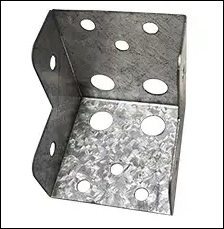
Side Protection Corner Bracket: An L-shaped bracket with multiple circular holes for versatile mounting, made from galvanized steel to provide corner reinforcement for temporary fencing.
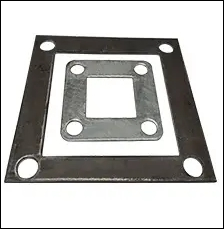
Base Lining Plate: A flat, square steel plate with a central square cut-out and pre-drilled holes, designed to underlie and stabilize a fence post.
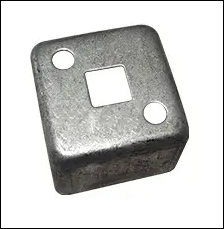
Square Fence Base: A robust square base with a raised central cut-out designed to snugly accommodate a fence post, ensuring upright stability.
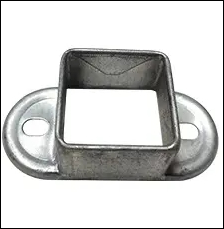
Fixing Clip: A rectangular metal clip with a central oblong cut-out and two mounting holes, used to attach fencing panels together securely.
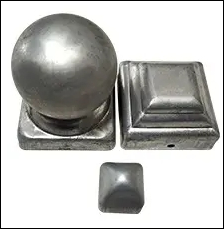
Post Cap: A protective square cap with a central recess to fit over the top of a fence post, ensuring protection and a finished look.
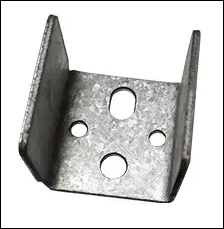
Inward Fixing Clip: A heavy-duty square clip with a central cut-out and holes on two sides for inner-side mounting to fence posts or panels.
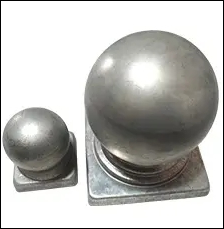
Top Ball Cap: A decorative cap featuring a prominent spherical top above a square base, intended to mount on top of fence posts.
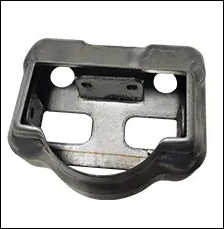
Built-into-the-Wall Bracket: A sturdy metal bracket with a central square opening and circular holes, designed for mounting fencing to wall surfaces.
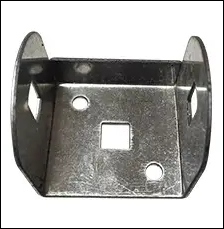
Outer Cover Bracket: An angular metal bracket with a central square cut-out used for attaching fence to external structures.
Products for Enhancing Security of Temporary Fencing
Major security products used for further security of temporary fences.
Razor Wire:
Manufactured with high-quality steel and a sharp blade profile, razor wire is used to prevent unauthorized access effectively. Ideal for topping temporary fences, it adds an extra layer of protection against intruders to breach the perimeter. Our razor wire is available in various coil diameters and designs, tailored to meet the specific security requirements of different sites.
Barbed Wire:
Barbed wire products serve as a classic yet effective security enhancement for temporary fencing. Constructed from high-tensile wire with sharp barbs spaced at intervals, it is designed to discourage trespassers from attempting to climb or tamper with the fence. Easy to install and versatile, our double strand twisted barbed wire can be used with a wide range of mesh and steel fencing panels.
Anti-climb 358 Fence Mesh Panels:
“358” refers to the mesh dimensions: 3″ x 0.5″ x 8 gauge, which makes the apertures too small to insert fingers or tools, effectively preventing climbing or cutting. These panels are robust and durable, providing a high level of security for sensitive sites such as industrial areas, utility facilities, and high-risk event perimeters. The Anti-climb 358 mesh panels are designed for easy installation alongside our temporary fencing products, ensuring a seamless and secure barrier against potential threats.
Assembly Process Overview
This is a general guide, and the specific assembly process can vary based on the type of temporary fence system and accessories you’re using. Always refer to the manufacturer’s instructions for the best results.
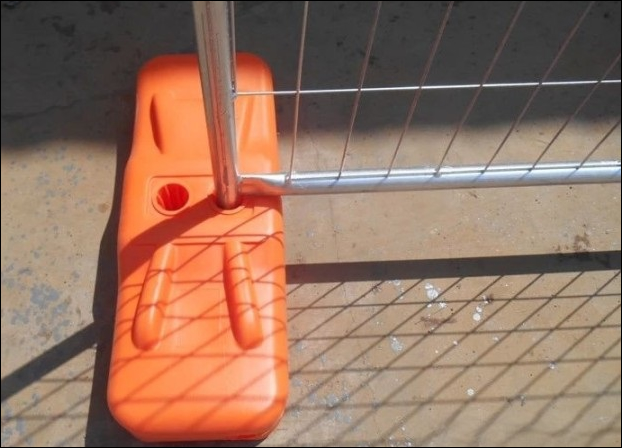
Layout: Start by laying out the position of your fence line, identifying where gates and turns will be.
Base Placement: Place base feet or blocks along the planned fence line at regular intervals corresponding to the length of your fence panels.
Panel Placement: Insert the first fence panel into the base feet and ensure it is upright and stable.
Panel Connection: Use clamps or couplers to connect the next panel to the first, adjusting for alignment and stability. Repeat for the entire length of the fence.
Bracing: Where necessary, add bracing or supports to ensure stability, especially in corners, gate areas, or long straight sections.
Accessories: Add gates, privacy screens, and anti-tamper hardware as needed throughout the fence line.
